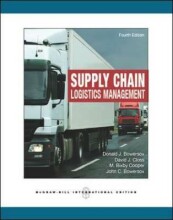Summary: B&e2: Behavior In Organisations
- This + 400k other summaries
- A unique study and practice tool
- Never study anything twice again
- Get the grades you hope for
- 100% sure, 100% understanding
Read the summary and the most important questions on B&E2: behavior in organisations
-
0 week 1 hoorcolleges
This is a preview. There are 2 more flashcards available for chapter 0
Show more cards here -
Why is work super invasive?
> full timers spend half or their time on work
> private time is partly spent on work
> work life will be prolonged -
What is healthy life expectancy related to?
Educational level > mensen met lager opleidingsniveau, werken meer fysiek en zijn sneller uitgeput -
What does the scientific management assumptions say
> one best way
> workers are stupid and lazy by nature
> money is only motivator
> managerial control is necessary to gain more profit -
What does the orgazinational change withhold of Cameron and Quinn?
Zie hiernaast -
0.1 week 2 hoorcolleges
This is a preview. There are 5 more flashcards available for chapter 0.1
Show more cards here -
What is the definition of a organization?
A collection of people who work together and coordinate their actions to achieve individual and organizational goals -
What do the organizational theories say?
- bureaucracy: authority based on rational principles rather than birthright. Separation of office and person
- taylorism: scientific management > detailed mapping of how employees carry out their tasks. Employees as machines, pay based on performance
- human relations: person directed view, human behavior influenced not only by externally imposed rules but also by attention, respect interest and interpersonal contact
- theory X, theory Y -
What does the sociotechnical system theory withhold?
Joint optimization (technical and social). Shift from individuals to teams; focus on self directing team -
What are the principles for structuring an organization?
1, Division of labour
2. Delegation of authority
3. Span of control
4 Line vs staff positions; who works for production and who works for employees/ -
When there are more manages, there is more span of control. For the employees this means?
> less autonomy in the workplace, less challenging work
> more rules, regulations and control
> less loyality, more turnover, less knowlegde -
What kind of organizational structures do we have?
- functional structure; grouped by the different business functions
- product directed structure: gericht op product > daarbinnen alle takken (sales, HR etc)
- geographical market directed structure: beiden zijn hierin verworven
- Higher grades + faster learning
- Never study anything twice
- 100% sure, 100% understanding































